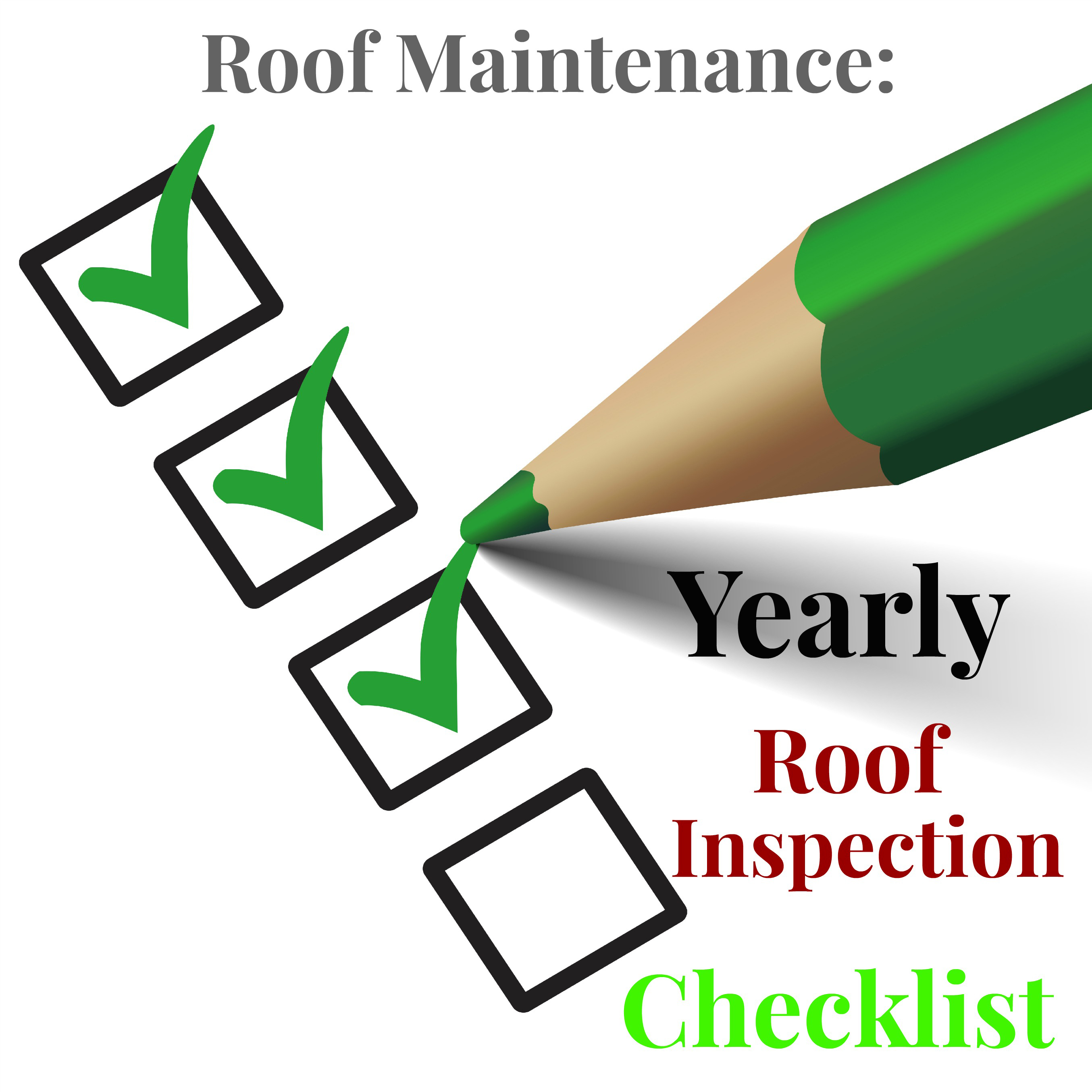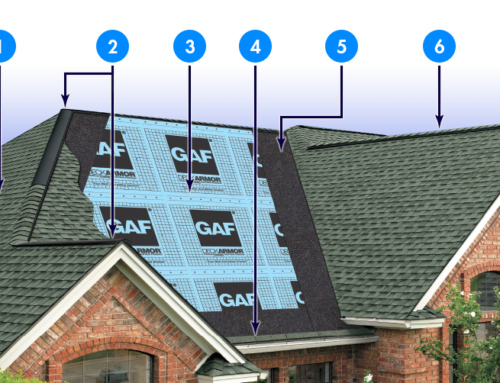A roof inspection is one of those preventative maintenance jobs that’s easy to overlook. Don’t. Add a once-a-year reminder on your calendar to go out on a dry day and address any roof problems you find. If you’re squeamish about heights, don’t worry, although it is not as thorough you can do a inspection from the ground using a pair of binoculars. Or, you can get up close and personal with your roof using a ladder. However, there’s no need to get up on your roof just yet. The less you walk around up there, the better for your roofing and the safer for you. Work your way around your house, noting any potential problems. As always be very cautious and safe when climbing ladders and on roof tops. Many people are injured every year doing involving ladders and roofing related projects. Best to leave roofing to a professional.
Your Roofing Checklist
Replacing Your Roof? Here’s a handy Homeowner Checklist to Prepare You.
Here’s a few tips that you can do that will help you understand what to expect, what could go wrong and how you can minimize any potential problems.
1) Cut your grass short. A good roofer will go around your house and attempt to pick up any nails that made it past the tarps they spread out to reduce problems with debris. When your old asphalt shingles are being ripped off your roof they are attached with metal nails and your underlayments are likely tacked down with staples. The shorter your grass is cut, the more likely your roofer will be able to find them with a magnetic nail finder.
2) Understand that not all nails will be found. It is a favorite little gimmick of some roofers to boast that they get all the nails. It is not possible. Thousands of nails will be falling off the side of your roof. If a roofer claims they will get all of the nails, you would be wise to quickly dismiss the rest of their unrealistic claims. Even though a good roofer will try to get the nails, some will be missed and as the homeowner you would be well advised to do your due diligence and walk around your house to at least do a visual inspection to see if you can find any.
3) Frost will push nails up. Even if you do a search for all the nails you can find, in northern climates homeowners often find nails pop up through the ground from a frost heave. It would be smart to do a walk around your house looking for nails after a spring thaw.
4) Cover items in your attic. This is one of the biggest items that I tell people and probably the #1 item that they ignore. Understand that there are gaps between the boards in your attic. Sometimes those gaps are small, especially if you have plywood or OSB decking on your roof, but sometimes those gaps are wide. Shingles, granules, tar paper, nails and everything that was put on your roof during past installs will fall onto your insulation or valuables you store in your attic. Yes, you can clean it up but your job will be so much easier if you cover those items with tarps or some sort of plastic sheeting.
5) Satellite dishes and antennas: Understand that satellite dishes may not be re-anchored perfectly. Roofers do not have the skills to calibrate a satellite dish. A good roofer is skilled at what they need to do which is to put a good quality roof on. Older houses sometimes have antennas on them that are no longer used. Make sure you tell your roofer what you would like to happen to them.
6) Ask questions about venting. Your home has at least one vent that is called a stack pipe. That pipe vents from your toilets and sinks up and out of your roof. Not only does it make it so your house doesn’t smell like sewage, but it also keeps dangerous gasses from coming into your home. These pipes have lead coverings. There are three types. The first type is adjustable and can be used on most low pitch roofs. A steep pitch lead is for steep roofs and is made so that you don’t have to bend the first type into such a shape as to render it mostly ineffective. The third type is a peak lead. If you have a stack pipe that goes right through the top of your peak, you will want this type. Ask the questions. Many roofers will just bend the first, less expensive one to somewhat fit. Don’t let them. A peak lead is triple the cost of others but it is also made for older, steep pitch houses with a tendency to have the stack pipe at the highest point of the roof.
7) Identify how your bathroom is vented. Sometimes people do not have a vent in their bathroom but it would be really nice to have one, wouldn’t it? Your roofer can put a bathroom vent in your roof to prepare a bathroom fan installer an easy way to hook one up.
8) Don’t mourn your plants. If hundreds of pounds of debris are falling from your roof, even if your roofer protects them with a tarp, they will get smashed. Don’t worry — most perennials will come back the next year. As for your annuals — well, maybe you want to wait until the fall to have your roof done. A roofer can lean plywood against your house to try to shield the plants, but you will be more upset if the siding is marred. If you recently had your house painted, especially if it was not primed and only one coat of paint was applied, the chances of damage is greater if you lean boards against the house to protect your plants. Plants will come back — siding damage can last.
9) Inform your neighbors. Hopefully you have a good relationship with your neighbors. Putting on a new roof will be loud. Houses that are close together can have damage. Your roofer may want to hang a tarp from your neighbors gutter to protect their siding if your houses are less than 10 feet apart. Let them know that it will be temporary. It might be a good opportunity to get to know your neighbor a little better.
10) Understand that problems can happen. While those problems are less likely to happen if you have a low slope roof in the suburbs where houses are far apart, it is not uncommon for things to go wrong. Be patient and keep an open line of communication with the owner of the company that is doing your roof. Problems don’t always happen, but when they do, work together to find a reasonable solution.
11) Decking problems sometimes arise. Your roofer needs to nail shingles onto a solid surface — or rather they should want to do that. I’ve seen houses where there were 5 inch gaps between a few boards and the roofer prior to me just bridged that gap with styrofoam — and no, styrofoam is not an appropriate structural roofing material. Sometimes decking needs to be replaced or a roof needs to be completely redecked. Standard industry costs vary, but a reasonable installed cost (and labor) shouldn’t exceed $3.50 per linear foot for boards or $50 per sheet for OSB or plywood. Of course regional differences apply and this article is being written in 2013 so prices can vary.
12) Weather is unpredictable. We all like to believe that meteorologists can tell us whether it is going to rain or not. The truth is that we can’t. Today the radar shows that there is no rain overhead, nor in the forecast. However, it is raining outside. On my wedding day it was supposed to be clear and dry, yet it rained. A good roofer will have tarps handy in case things like this happen. They will also have cap nails to secure the tarp in case the skies open up and the rain wants to drench a job site. What type of underlayments you chose (woe to the folks who chose to go cheap with only tar paper) can also mean the difference between having a long lasting roof or a quick, albeit temporary, fix.
13) Leave for the day. Let the professionals do their jobs. I cannot tell you how many times I have had customers who want to be home during the install. Nothing I say can prepare them for the self-induced migraines some of them have endured from the constant banging. Walking in and out of the drop zone can be dangerous. Doubt this? Pick up a bundle of shingles and then imagine it sliding off your roof when you happen to walk out of your house. If you are claustrophobic, realize that better contractors will tarp off your house.
Take these tips to heart and, depending upon your contractors installation practices and the underlayments you chose, you could have a well installed roof that will protect you for decades to come.
This article is from: https://www.wisconsinenergymasters.com/replacing-your-roof-heres-a-handy-homeowner-checklist-to-prepare-you/





